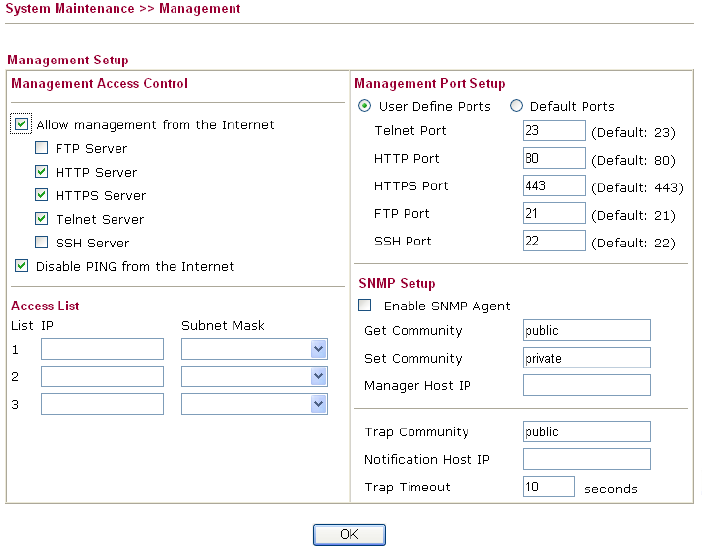
Vigor2910 Series User’s Guide
52
Public Port Specify which port can be redirected to the specified Private IP
and Port of the internal host. If you choose Range as the port
redirection mode, you will see two boxes on this field. Simply type
the required number on the first box. The second one will be
assigned automatically later.
Private IP Specify the private IP address of the internal host providing the
service. If you choose Range as the port redirection mode, you will
see two boxes on this field. Type a complete IP address in the first
box (as the starting point) and the fourth digits in the second box
(as the end point).
Private Port Specify the private port number of the service offered by the
internal host.
Active Check this box to activate the port-mapping entry you have
defined.
Note that the router has its own built-in services (servers) such as Telnet, HTTP and FTP etc.
Since the common port numbers of these services (servers) are all the same, you may need to
reset the router in order to avoid confliction.
For example, the built-in web configurator in the router is with default port 80, which may
conflict with the web server in the local network, http://192.168.1.13:80. Therefore, you need
to change the router’s http port to any one other than the default port 80 to avoid
conflict, such as 8080. This can be set in the System Maintenance >>Management Setup.
You then will access the admin screen of by suffixing the IP address with 8080, e.g.,
http://192.168.1.1:8080 instead of port 80.
3
3
.
.
3
3
.
.
2
2
D
D
M
M
Z
Z
H
H
o
o
s
s
t
t
As mentioned above, Port Redirection can redirect incoming TCP/UDP or other traffic on
particular ports to the specific private IP address/port of host in the LAN. However, other IP
protocols, for example Protocols 50 (ESP) and 51 (AH), do not travel on a fixed port. Vigor
router provides a facility DMZ Host that maps ALL unsolicited data on any protocol to a
single host in the LAN. Regular web surfing and other such Internet activities from other


















